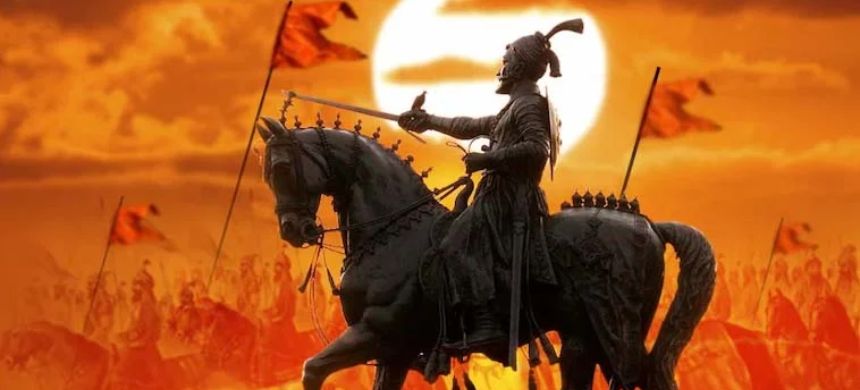Chhatrapati Shivaji Maharaj stands as one of the most iconic figures in Indian history. Known for his unmatched courage, strategic military mind, and commitment to justice, Shivaji established the Maratha Empire in the 17th century, challenging the dominant powers of his time. His legacy continues to inspire leaders, scholars, and citizens across the globe.
For readers in the U.S. unfamiliar with Indian history, understanding Shivaji’s role is crucial to appreciating the cultural and military evolution of South Asia. His story is not just about battles, it’s about leadership, resilience, and a deep connection to his people and land.
Early Life of Chhatrapati Shivaji Maharaj
Born in 1630 at the Shivneri Fort in present-day Maharashtra, Shivaji was raised by his mother Jijabai, who deeply influenced his values and vision. His father, Shahaji Bhosale, was a general in the Deccan Sultanate. From a young age, Shivaji was trained in martial arts, horse riding, and military tactics.
Even as a boy, he showed signs of sharp intelligence and strong leadership. He dreamt of creating a kingdom rooted in self-rule, breaking away from the control of the Mughal Empire and other dominant forces in India.
Founding the Maratha Empire: Bravery Meets Strategy
Chhatrapati Shivaji Maharaj wasn’t just a warrior; he was a master strategist. He used terrain, speed, and surprise to his advantage, introducing guerrilla warfare (now studied in military academies worldwide). He started his campaign by capturing Torna Fort in 1646, followed by other key forts that strengthened his control over western India.
In 1674, Shivaji was formally crowned as Chhatrapati (King) at Raigad Fort, marking the official foundation of the Maratha Empire. His empire emphasized efficient governance, religious tolerance, and people-centric policies, which made him beloved by his subjects.
The Forts That Made Him Legendary: Now a UNESCO Treasure
In 2025, UNESCO recognized the Maratha Military Landscapes, including 12 forts associated with Chhatrapati Shivaji Maharaj, as World Heritage Sites. This historic move acknowledges the brilliant military architecture and planning of the Maratha Empire.
These forts, spread across hills, coasts, plateaus, and islands, include Raigad, Rajgad, Shivneri, Pratapgad, and Vijaydurg. Each one tells a story of defense, innovation, and resilience. The inclusion in UNESCO’s list not only honors Shivaji’s legacy but also promotes global awareness of India’s rich cultural heritage.
This recognition connects modern audiences, especially in the U.S., with the importance of preserving architectural masterpieces that shaped global military history.
Family Life and the Question: “Who is Shivaji’s Son?”
Shivaji’s family played a vital role in his reign. His most famous son, Sambhaji, succeeded him after his death. Sambhaji was also a fierce warrior and tried to carry forward his father’s legacy, though his rule faced many challenges, including battles with the Mughal Emperor Aurangzeb.
Shivaji had multiple wives, but the best-known Chhatrapati Shivaji Maharaj spouse was Saibai, his first and most respected wife. She was the mother of Sambhaji. Despite the intense political climate, Shivaji’s household remained a space of strong cultural and moral grounding.
Leadership Style and Modern Relevance
Unlike many rulers of his time, Chhatrapati Shivaji Maharaj treated people of different religions with respect. He ensured that women were protected, land revenue was collected fairly, and his administration was transparent and efficient. He also emphasized local languages and traditions, strengthening the cultural identity of his people.
In today’s world, where leadership often lacks accountability, Shivaji’s model of governance remains relevant. His emphasis on values, ethics, and people’s welfare makes him a timeless figure in leadership discussions, even in Western business schools and political circles.
Chhatrapati Shivaji Maharaj Died: But His Legacy Lives On
Chhatrapati Shivaji Maharaj died in 1680 at the age of 50. The cause of death is believed to be illness, though some historical accounts suggest poisoning. His passing left a temporary power vacuum, but his vision and military structure kept the Maratha Empire alive for many years.
Even centuries after his death, his ideals continue to influence political and cultural thought across India. Statues, schools, airports, and institutions are named after him. His life story is part of school curriculums and public discourse alike.
Cultural Impact and “Chhatrapati Shivaji Maharaj Movie” Influence
Indian cinema has repeatedly turned to Chhatrapati Shivaji Maharaj’s life for inspiration. Several Chhatrapati Shivaji Maharaj movies have been produced over the decades, depicting his battles, coronation, and noble deeds.
These movies, especially with modern digital remakes, have helped a younger generation understand and visualize the grand narrative of his life. International audiences, particularly in the U.S., can now access these stories through subtitles and streaming platforms, offering a rich visual entry into Maratha history.
Final Thoughts: Why Shivaji’s Story Still Matters
Chhatrapati Shivaji Maharaj wasn’t just a king, he was a visionary. He built a system that empowered locals, respected cultural identities, and fought against oppression. His forts were not just structures of war but symbols of pride, freedom, and ingenuity.
His recognition by UNESCO in 2025 reminds the world of how timeless his achievements are. For readers in the U.S. looking to explore Indian history beyond textbooks, Shivaji’s life offers a compelling blend of action, governance, culture, and philosophy.For more on rising stars in Indian entertainment, see how Kapil Sharma emerged as the richest star in Indian television.











